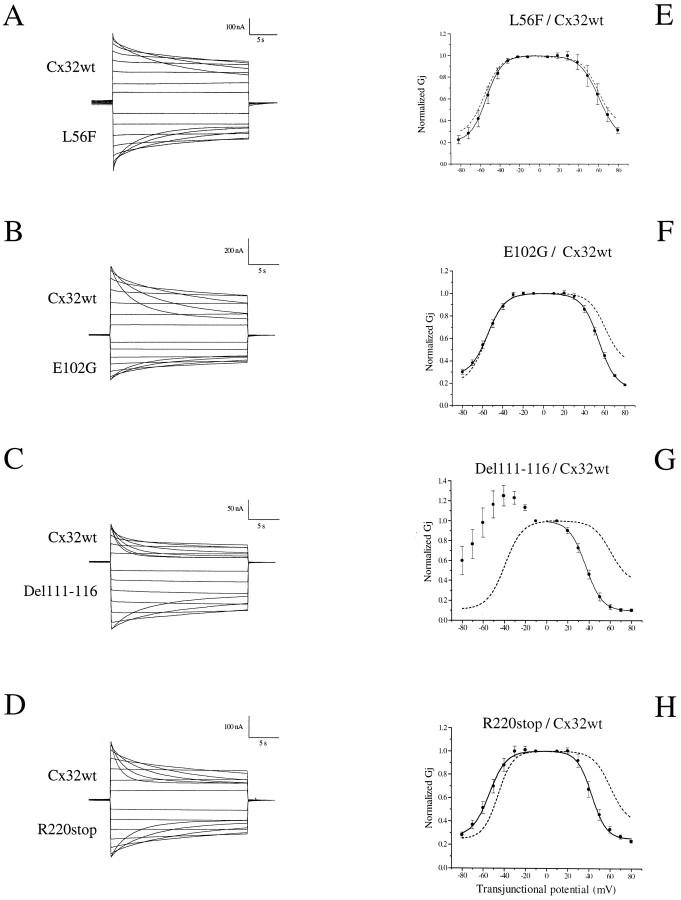Fig. 6.
The formation of heterotypic channels between Cx32wt and CMTX mutations reveals unexpected electrical properties. Experimental conditions were as described in the legend to Figure 4.A–D, Time-dependent decay of junctional currents (Ij) induced by transjunctional voltage (Vj) steps applied in 10 mV increments. When Cx32wt was paired to L56F (A), E102G (B), or R220stop (D), currents exhibited a mainly symmetrical reduction for Vj ≥30 mV. In contrast, Del111–116/Cx32wt heterotypic channels (C) were characterized by a marked rectification and asymmetry of the voltage-gating behavior. E–H, Plots of mean steady-state conductance versusVj, normalized to the values obtained with a driving force of ±10 mV. Vj is defined as positive for depolarization of the right-hand cell (e.g., Cx32wt) relative to the left-hand cell (e.g., either one of the CMTX mutations) and vice versa. Solid lines represent the best fits to Boltzmann equations for which the parameters are given in Table 1. Dashed lines represent the predicted conductance of heterotypic channels on the basis of the properties of homotypic channels. Results are shown as the mean ± SEM of the following number of oocyte pairs: L56F/Cx32wt, n = 4; E102G/Cx32wt, n = 5; Del111–116/Cx32wt,n = 6; R220stop/Cx32wt, n = 5.

